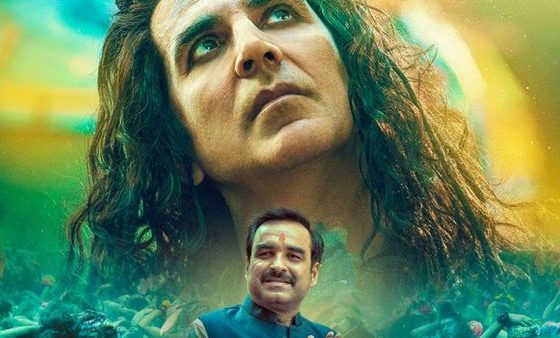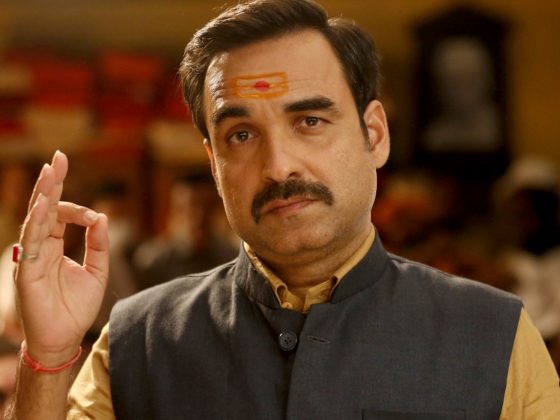From its announcement to its release, director Nelson and superstar Rajinikanth’s collaboration, “Jailer”, has been facing a lot of obstacles and skepticism. With Nelson’s previous film “Beast” and the superstar’s previous film “Annaththe” receiving an abysmal response, both the artists had the weight of delivering a work that would dust off all the skepticism. Does “Jailer” dust off the doubts? Let’s delve into it.
Eminent critic Bharadwaj Rangan in his recent Spotify Podcast mentioned how, “Rajinikanth films don’t belong to a particular genre but the star is a genre in itself.” Perfecting the Rajini genre has always been an interesting case for every filmmaker over the years. In the 70s, the Rajini genre had the ‘Angry Young Man’ template (thanks to the Amitabh Bachchan movies) which defined his style, mannerisms and took a place in the folks’ heart as the narratives connected a lot with common man’s struggle at the same time providing the escapist route needed.
In 1995, the Surresh Krishnna directorial “Baasha” released and gave a redefining spin to the template of the ‘Angry Young Man’. The “Baasha” template became pretty much a staple for the star’s filmography and the template became an influential one in Indian Masala cinema history at present. While a few films like “Petta” which got into the “Baasha” template (with exceptions like “Enthiran”, “2.0” ) perfected the “Baasha” template and mostly were meandering in the template and failed miserably in terms of people’s reception. The narratives became so tiring that even the 72 year old star’s presence and nostalgia couldn’t save those films.
Nelson takes this “Baasha” template yet again like his predecessors, but the director adds his own quirks and style to the narrative. In doing so, he doesn’t shy away from displaying the star-power of Thalaivar. Except for the iconic title card, “Jailer” doesn’t rely on nostalgia to a great extent but places it subtly here and there making it rewarding for the hardcore Thalaivar fans (watch out for the post-interval flashback portions). Nelson builds the family dynamics of Muthuvel Pandian and the world of “Jailer” so well that the stakes feel both palpable and relevant to this era. The aspect that’s more discerning with the use of “Baasha” template here is that the star’s character has been painted with shades of grey, thus making him like a Devil rather than a God.
Thanks to his amazing timing and body language, Rajini’s films always had great humor quotient and his combo with yesteryear comedians like Goundamani, Senthil, Vivek (even with actors like Prabhu) displays a great chemistry in memorable gags. Probably with the exception of “Sivaji the Boss”, most of his recent films lacked the humor quotient and comedic camaraderie. Nelson brings his brand of humor into the narrative and adds the humor quotient that was missed in recent Thalaivar Films.
Rajini’s camaraderie with Yogi Babu scores everytime and the deadpan humor at certain points hits the right note with meta-references to the star’s previous films laced within. Also the film features Nelson’s recurring bandwagon of comedians which includes Redin Kingsley, Jaffer Sadiq, Sunil Reddy, Sunil Verma who provide the witty humor required for the narrative without diluting the immersiveness. The placement of “Kaavaala” song into the narrative pretty much comes across like a smart and cheeky move from the maker, reminiscent of the “My name is Sheila” song from “Tees Maar Khan”.
Without “Mark Anthony”, there is no “Baasha”; without “Neelambari” there is no “Padaiyappa”. Without a great villain, there is no meaning for the hero’s rise. The recent Rajini films lacked a menacing villain (even his last successful venture “Petta” too) that made the central conflict less meatier and uninteresting enough to engage. Surprisingly, “Jailer” places the phenomenal Actor Vinayakan as the antagonist, playing the role of the Vengeful Varman who is involved in antique statue heists. The film starts with his introduction and Nelson has sketched the character in such a way that he is menacing and comedic enough making him multidimensional.
His torture techniques feel like a subtle nod to the “Breaking Bad” series. Everytime he confronts Thalaivar, the threat feels real thanks to the actor’s amazing body language and dialogue delivery. Actor Vinayakan provides the raw and indigenous energy that was missing from a lot of villain characters in recent times in masala movies, thus also fixing the “Boss Villain” problem.
The execution of Masala Movies requires the knack to calculatively placing the Mass moments without missing the storybeats. Only a few films successfully walk this fine line and “Jailer” walks this line with an aplomb vigor. Throughout the first half, Rajini showcases a lot of subtlety yet there is charisma and mass embedded. This becomes evident from the precisely staged interval block. The ‘actor’ Rajini too shines a lot here notably in the last act where he bursts into laughter with a destructive reaction on his face (throwback to “Baasha” interval block); it’s the kind of scene that makes you wonder the man’s range that express a cosmos of emotions. The film acknowledges the star’s age yet Nelson doesn’t shy away from showcasing a more deadlier Thalaivar, reminiscent of Bob Odenkirk from “Nobody” or Denzel Washington from “Equalizer”.
With Pan-India appeal becoming the rise in recent years, “Jailer” too has integrated roles of actors from various industries like Jackie Shroff (seen last with Rajinikanth in “Uttar Dakshin”), Mohanlal and Shivraj Kumar. It is integrated in a way that doesn’t feel like a sore thumb but more needful to the story. Needless to say, all the stars provide a thunderous presence in their minimal screentime. Whether it was intentional or unintentional, everytime thalaivar encounters Shivraj Kumar and Mohanlal personally gave me a sweet throwback to “I think I need a gun” dialogue from “John Wick Chapter 4”. Their encounter isn’t just played for the mass value but also has a meta-subtext that Rajini’s stardom has cast across India, a testament that the humble image he has created over the years.
A memorable background score is the key for success in most masala movies. Music director Anirudh who has been delivering consistent scores for mass films and hits right out of the park this time as well with “Jailer”. Thalaivar looks a lot more swagger and uber-cool with Anirudh’s adrenaline fueled score blasting the speakers. “Thalaivaru Allappara” won’t leave your minds after walking out from the theatre. Except for “Kaavaalaa”, “Hukum” song is used at the right places to elevate the presence of Thalaivar and “Rathamarey” delivers the emotional quotient.
Vijay Kartik Kannan’s cinematography has a lot of echoes of “Breaking Bad”/”Better Call Saul”, composing frames that give characters room to breathe while symmetrically placing wide landscapes in warm yellow tones. The silhouettes and the closeups of Thalaivar’s glasses from the lens carry the potential of going down as moments that defined Rajni’s cinema. The editing by R.Nirmal gives the engrossing narrative a required pace that is boosted by the deft inter-cutting. Special credits to Makeup Artists C.Harinath, Preethisheel Singh and Costume Designers Pallavi Singh, Hafeez who provided some of the stylish looks for Rajini suitable for his age. The CGI remains commendable, especially with the de-aged look of Thalaivar during the flashback scenes almost giving a throwback to his days of “Moondru Mugam”.
This isn’t a criticism of the film but more of a criticism on Censor Board. “Jailer” has a lot of gorier and explicit violent action sequences but it is still certified “U/A” instead of a clean “A”. Not just “Jailer”, most of the recent mass masala starrers like “Beast”, “KGF Chapter 2”, “Vikram”, “Dasara” too are rated “U/A” which really makes me question what’s actually the process behind certification of movies status quo.
While this “Jailer” entertains you, it comes with a few duds here and there. Some of the running gags are stretches in the second half somewhat halt the engagement of the narrative. There could have been some trims here and there making it sleeker. As I have earlier mentioned how the narrative of “Jailer” follows the “Baasha” template which had some subversions and smart twists here and there, some viewers may feel a bit worn out of this formulaic template.
Also as it’s often the case, with great star-power comes a truck load of plot armour and logical loopholes. The climax twist was something unpredictable yet it will be a “surprise” depending on the viewers subjectivity. This applies to Nelson’s brand of humor too. I personally think that Nelson could tone down the homophobic/misogynist undertones in his humor in the near future. While the family dynamics were explored in a wholesome manner, it is just that Ramya Krishnan’s character could have had more scope in the narrative.
Nonetheless, it was satisfying to see a theatre cheering by throwing paperbits, whistling, hooting and howling on-screen for a star film after a very long time throughout the runtime. In the end, “Jailer” is a well-calculated entertainer delivering the thing rightly in the first place: unpretentious casual entertainment with the story beats and star-power striking a fine balance.











